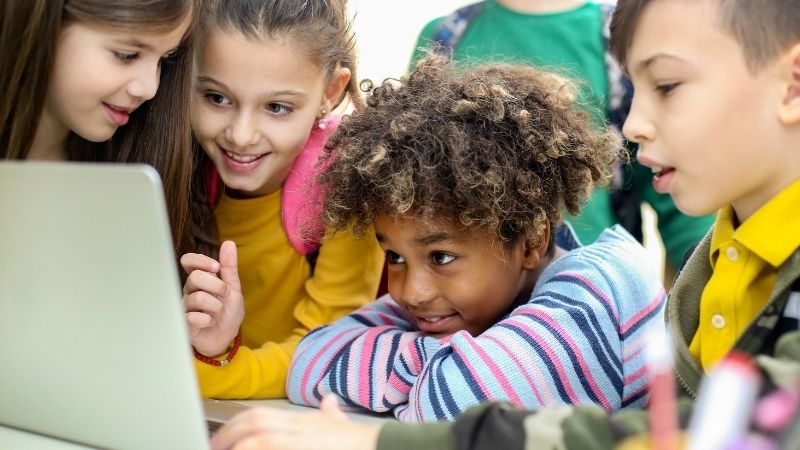
In recent years, the integration of assistive technologies into educational settings has significantly impacted the learning experiences and challenges faced by special needs students.
According to a survey conducted by [source], it was found that [interesting statistic].
This article aims to explore how technological devices, software, and applications with accessibility features have transformed the educational landscape for these students.
By examining the impact on learning experiences, opportunities for growth, and empowerment of special needs students through accessible technologies, this article seeks to illustrate the potential of driving change in inclusive education.
Key Takeaways
- Technological devices provide access to assistive technologies tailored to individual learning needs, enhancing communication and promoting independence in academic pursuits.
- Software with accessibility features improves inclusion and fosters independence for special needs students, creating an environment that supports diverse learners and promotes essential skills development.
- Assistive applications provide innovative solutions that promote inclusivity, help individuals with special needs overcome limitations, and transform challenges into opportunities for personal growth and development.
- Accessible technologies, such as adaptive hardware and specialized software, unlock the untapped capabilities of special needs students, empowering them to overcome barriers and access educational opportunities.
The Impact of Technological Devices on Special Needs Students
The integration of technological devices in the learning environment has significantly impacted special needs students by providing them with access to assistive technologies that cater to their individual learning needs. These devices have played a crucial role in improving communication and facilitating independence for these students.
Technological advancements, such as speech-to-text software and alternative input devices, have made it easier for students with communication difficulties to express themselves effectively. Additionally, specialized applications and software have been developed to support various cognitive and physical impairments, enabling students to engage actively in the learning process independently.
For example, text-to-speech software allows visually impaired students to access written material easily. Overall, the use of technological devices has transformed the educational experience for special needs students by enhancing their ability to communicate effectively and promoting greater independence in their academic pursuits.

Enhancing Learning Experiences Through Software Accessibility Features
Enhancing learning experiences can be achieved through the integration of software that incorporates accessibility features. This not only improves inclusion for special needs students but also fosters independence by providing them with the necessary tools to overcome their unique challenges.
The use of screen readers enables visually impaired students to access digital content, allowing them to participate fully in classroom activities and engage with educational materials.
Text-to-speech software assists students with reading difficulties, offering a more personalized and efficient approach to learning.
Speech recognition technology empowers individuals with physical disabilities to navigate computer systems and communicate effectively.
By implementing these software accessibility features, educational institutions create an environment that supports diverse learners. Students are no longer limited by their disabilities but can actively participate in the learning process, developing essential skills and knowledge independently.
This transformative approach promotes freedom in education and ultimately leads to improved academic outcomes for all students.
Implementing assistive applications allows individuals to overcome obstacles and leverage opportunities for personal growth. These applications play a crucial role in transforming challenges into opportunities by providing innovative solutions that promote inclusivity and help individuals with special needs overcome their limitations.

For instance, communication apps equipped with text-to-speech features enable individuals with speech impairments to express themselves effectively, fostering independence and self-confidence. Similarly, educational apps designed with customizable settings and adaptive learning techniques cater to diverse learning styles, ensuring equal access to education for all students.
Unleashing the Potential of Special Needs Students With Accessible Technologies
Utilizing accessible technologies has the potential to empower students with diverse abilities and unlock their untapped capabilities. These technologies unleash the potential of special needs students by providing them with tools and resources that cater to their unique learning needs.
Adaptive hardware: Specialized devices, such as braille keyboards or eye-tracking systems, enable students with visual impairments or physical disabilities to navigate digital platforms independently.
Assistive software: Screen readers and text-to-speech applications transform written content into auditory formats, enabling students with reading difficulties or dyslexia to access information effortlessly.
Accessible applications: Educational apps designed with accessibility features provide interactive learning experiences that accommodate various learning styles and cognitive abilities.
Empowering Special Needs Students Through Assistive Technology Solutions
The integration of assistive technology solutions can be a powerful tool in empowering students with diverse abilities to overcome barriers and access educational opportunities. Inclusive education aims to provide equal learning experiences for all students, including those with special needs.
Assistive communication devices, such as speech-generating software and alternative keyboards, are essential tools that enable students with communication difficulties to express themselves effectively. These technologies enhance the learning experience by facilitating effective communication between students and their teachers or peers.

Additionally, assistive technology solutions provide personalized support, allowing educators to tailor instruction based on individual student needs. By incorporating these technologies into inclusive classrooms, educators can create an environment that fosters independence, autonomy, and active participation for all students regardless of their abilities.
This not only enhances the educational experiences of special needs students but also promotes inclusivity and equality within the education system.
Frequently Asked Questions
How Do Technological Devices Specifically Benefit Special Needs Students in Their Learning Experiences?
Technological devices offer various benefits to special needs students, particularly in their learning experiences. These devices help address and overcome learning challenges by providing accessible features such as adaptive software, applications, and assistive technologies tailored to individual needs.
What Are Some of the Most Common Challenges That Special Needs Students Face in Their Education, and How Do Assistive Applications Address These Challenges?
Addressing learning challenges for special needs students is crucial. Innovative assistive applications have transformed their education by providing personalized learning, promoting independence, facilitating communication, and overcoming physical limitations, ultimately enhancing their overall learning experiences.
Can You Provide Examples of Specific Software Accessibility Features That Have Been Successful in Enhancing the Learning Experiences of Special Needs Students?
Software tools and learning apps with accessibility features have transformed the learning experiences of special needs students. For example, text-to-speech software helps visually impaired students access written content, while speech recognition software aids those with physical disabilities in completing tasks.
How Have Accessible Technologies Empowered Special Needs Students to Overcome Barriers and Reach Their Full Potential in Their Education?
Accessible technologies have empowered special needs students by breaking down barriers and enabling them to fully participate in their education. The benefits of assistive devices, such as technological devices, software, and applications with accessibility features, have transformed learning experiences for these students.
Are There Any Assistive Technology Solutions That Have Been Particularly Effective in Empowering Special Needs Students, and if So, What Are They?
Assistive technology solutions have been effective in empowering special needs students by providing them with tools and resources to overcome learning challenges. These technologies include communication devices, adaptive software, and assistive apps that enhance accessibility and facilitate inclusive learning environments.

 Careers in EducationElementary EducationHigh School EducationEducational TechnologyTeaching StrategiesSpecial EducationPrivacy PolicyTerms And Conditions
Careers in EducationElementary EducationHigh School EducationEducational TechnologyTeaching StrategiesSpecial EducationPrivacy PolicyTerms And Conditions
